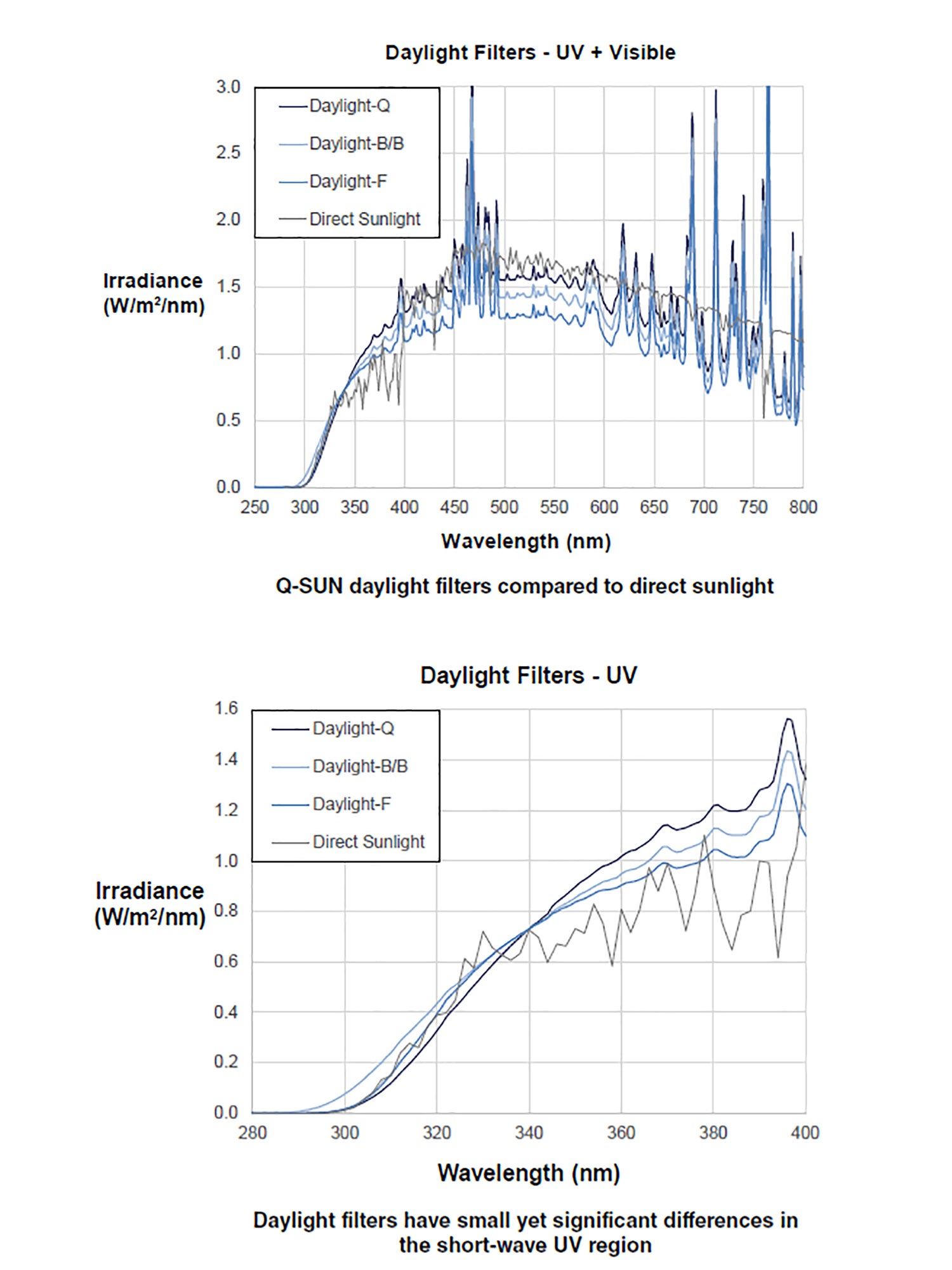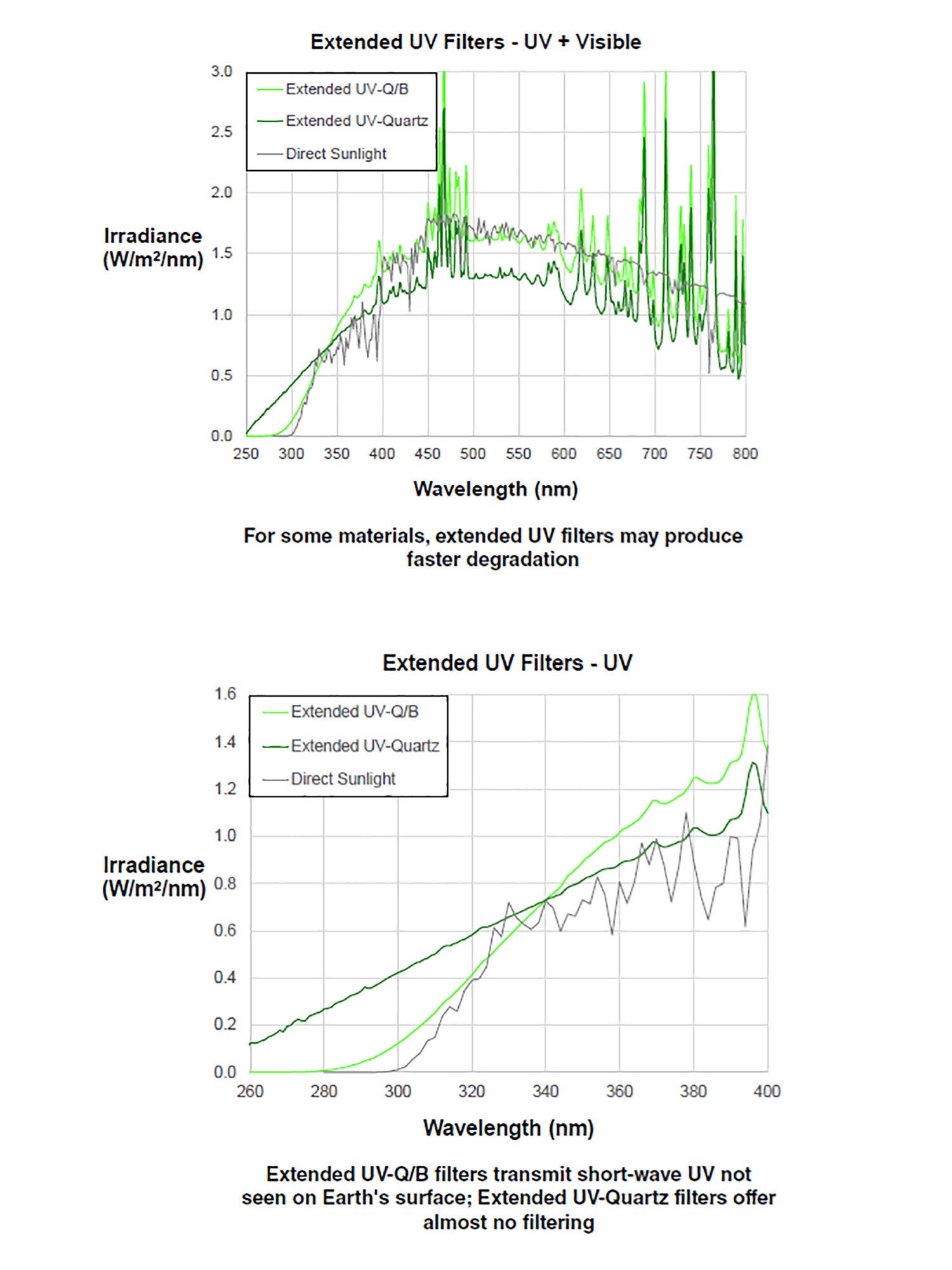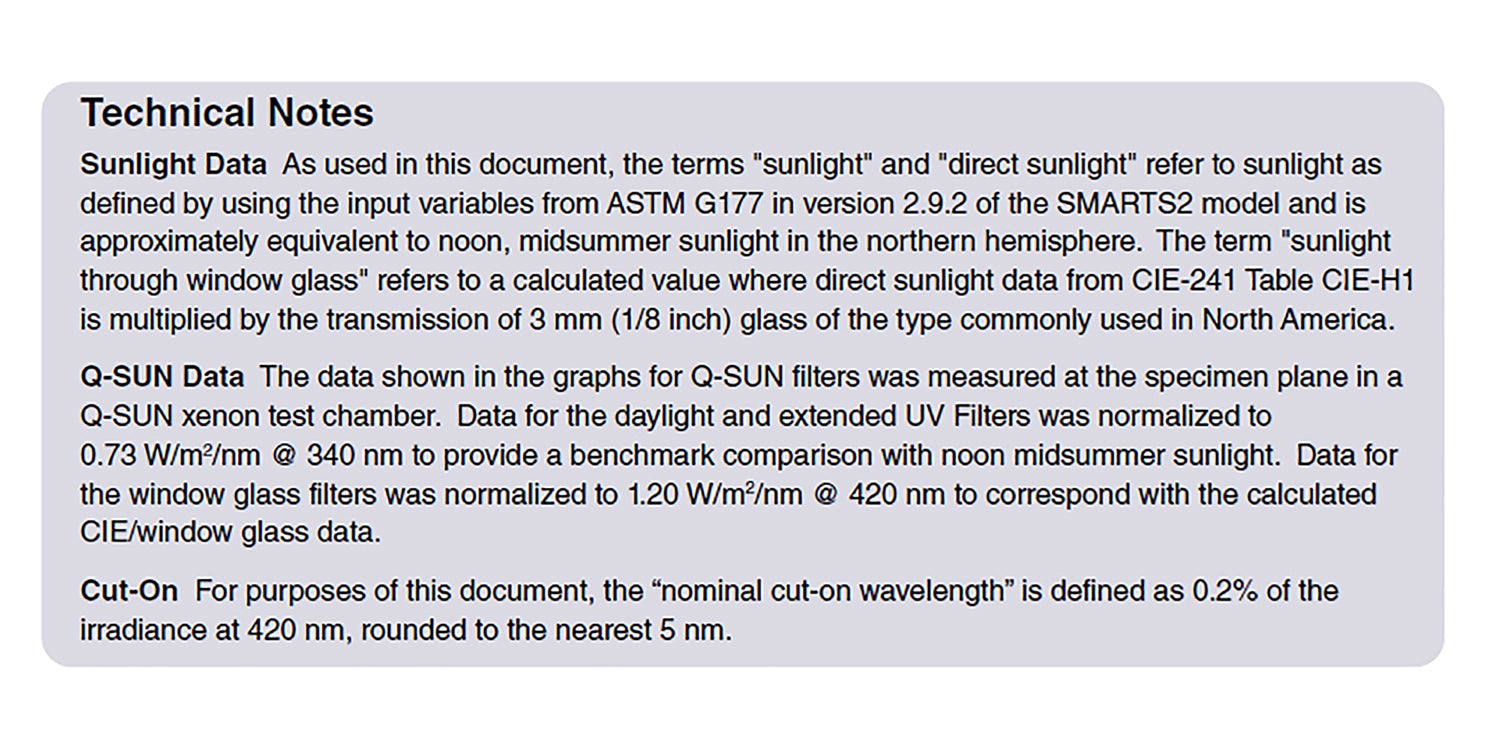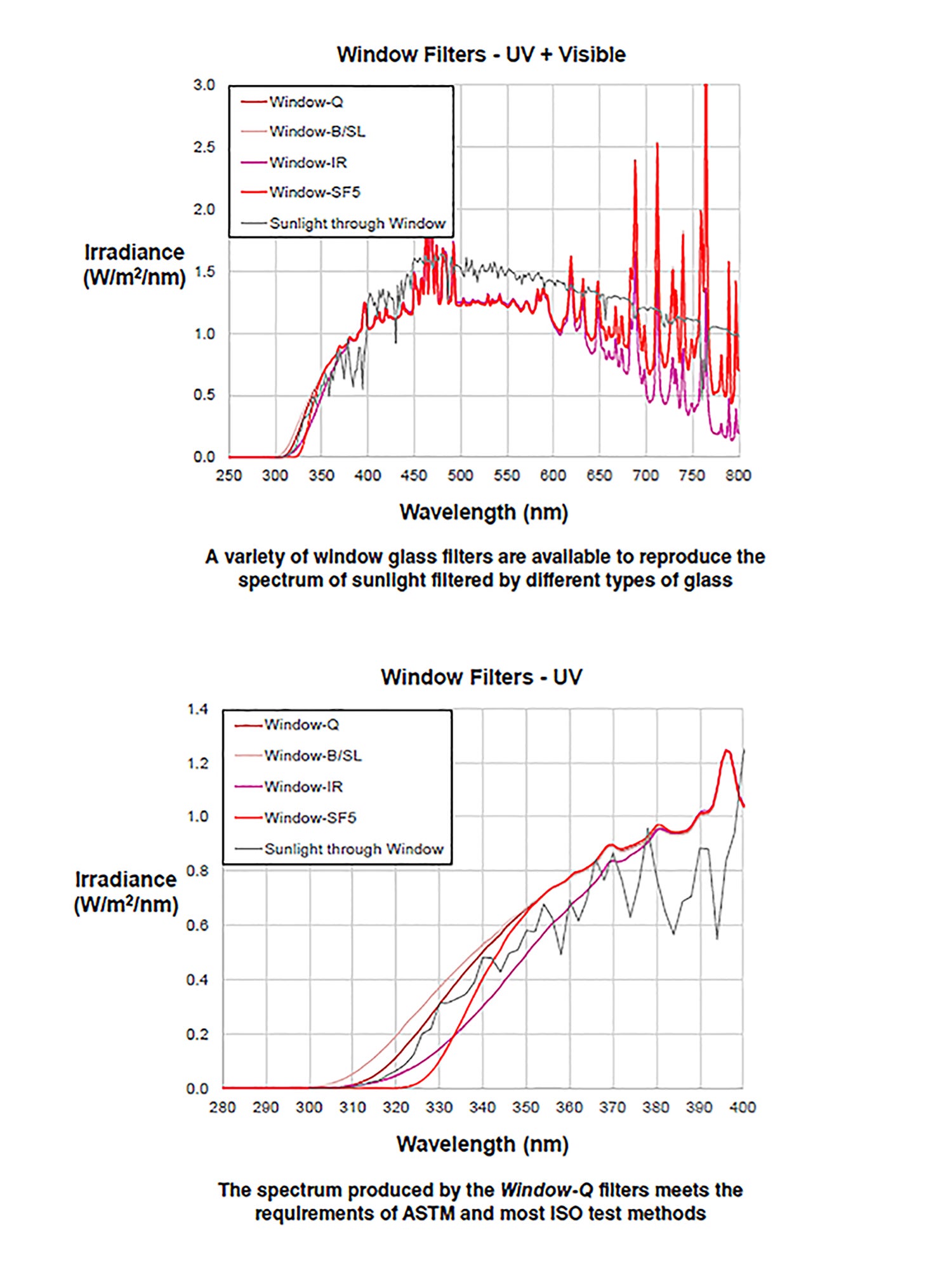LX-5060 A Choice of Filters for Q-SUN Xenon Test Chambers
Technical Bulletins
Posted 2023
Last Updated 2023
LX-5060
There are three general categories of filters that can be used in Q-SUN® xenon arc test chambers. The choice of filter depends upon the material tested and its end-use application. Within each general category, there may be several different types of filters. Each filter consists of specialty glass specifically designed to have a particular transmission.
Because the radiation from an unfiltered xenon arc contains too much short-wave UV to allow useful correlation to natural exposures on the earth’s surface, Q-SUN testers employ various types of optical filters to reduce unwanted radiation and achieve an appropriate spectrum. For most of the filter types used, the greatest effect is on the short wavelength portion of the spectrum. Because the damaging effects of UV are inversely proportional to wavelength (shorter wavelengths are more damaging), it is critical that the cut-on wavelength match the service environment. Nominal cut-on wavelengths are shown below for each filter type.
Daylight Filters
Q-SUN daylight filters produce spectra approximately equivalent to direct sunlight and conform to the spectral requirements of ISO 4892, ISO 11341, ASTM G155, ASTM D7869, and SAE J2527. They are recommended for testing materials that are intended for outdoor use.
Daylight-Q With a nominal cut-on of 295 nm, Daylight-Q provides an accurate spectral match with direct sunlight. This filter is often recommended for the best correlation between Q-SUN xenon and natural outdoor exposures. Daylight-Q meets the requirements of a Type I optical filter in ASTM G155 and ISO 4892-2.
Daylight-B/B With a nominal cut-on at 290 nm, Daylight-B/B is recommended when correlation to some historical test results is desired. Daylight-B/B meets the requirements of a Type II optical filter in ASTM G155 and ISO 4892-2.
Daylight-F With a nominal cut-on of 295 nm (Type 1), Daylight-F also provides an accurate spectral match with direct sunlight, particularly in the short-wave UV region. Developed within the automotive industry, this specialty filter has become adopted in some automotive and test standards (notably ASTM D7869).

Extended UV Filters
Q-SUN extended UV filters allow significant excess UV below the cut-on of natural sunlight at the earth’s surface. Extended UV filters are often used to produce faster degradation than daylight filters. They may also be used to reproduce extraterrestrial spectra for aerospace applications.
Extended UV-Q/B This filter has a nominal cut-on at 275 nm. For many materials it will produce faster degradation than daylight filters. This filter may be required for certain automotive test methods including SAE J2412 and SAE J2527. It is described in ASTM G155.
Extended UV-Quartz Certain special applications require a spectrum with aggressive, very short-wave UV to produce an extraterrestrial exposure condition. The quartz filter has a nominal cut-on at 250 nm. Because of its extreme short wave UV cut-on, this filter does not meet the definitional requirements for an “extended UV filter” as defined in SAE or ASTM.


Window Glass Filters
Window glass filters produce spectra equivalent to sunlight passing through windows, and are intended for testing materials that are used indoors. However, there is no single “standard window glass.” Because transmission varies due to thickness, chemical composition, tint, and other factors, several window glass filters have been developed.
The spectrum produced by the Q-SUN Window glass filters also covers most of the wavelengths that would be found from the
many artificial light sources used indoors, so it is appropriate for most indoor applications. For more information on how the spectrum of window glass filtered xenon compares to indoor light sources, see Q-Lab Technical Bulletin LX-5026 Quantifying the Indoor Light Environment.
Window-Q This filter is equivalent to direct sunlight passing through a piece of singlestrength, single-pane glass of the type most widely used in North America. This filter meets the requirements for window glass filters in ASTM and most ISO test methods. Window-Q has a nominal cut-on of 310 nm.
Window-B/SL. This filter is slightly more transmissive and produces a spectrum with slightly more short-wave UV. Window - B/SL has a nominal cut-on of 300 nm. This filter meets the requirements for window glass filters in ASTM, ISO and AATCC test methods, including AATCC TM 16-3.
Window-IR. Infrared (IR) filters produce a similar short wavelength cut-on as other window glass filters, but also reduce the amount of long wavelength visible and IR energy that reaches the test specimen. This filter meets certain test specifications that call for “heat reducing filters" (ISO 105 B02). The IR filter has a nominal cut-on of 320 nm.
Window-SF5. This filter is specified for certain automotive interior tests (such as Ford) that require a so-called "335 nm long pass filter." Despite this OEM-designated description, the nominal cut-on for this filter is 325 nm. It is designed to simulate automotive interior conditions.

